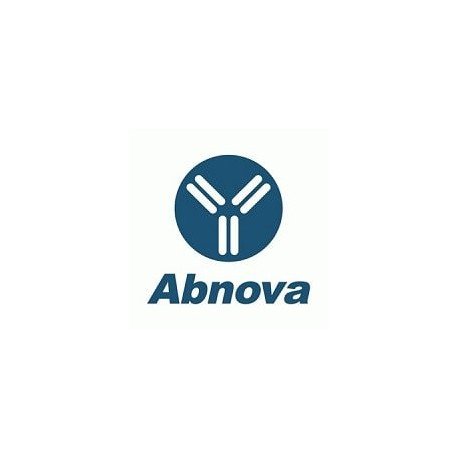Cart 0 Product Products (empty)
No products
To be determined Shipping
0,00 € Total
Prices are tax excluded
Product successfully added to your shopping cart
Quantity
Total
There are 0 items in your cart. There is 1 item in your cart.
Total products (tax excl.)
Total shipping (tax excl.) To be determined
Total (tax excl.)
Data sheet of ELMO2 polyclonal antibody
| Brand | Abnova |
| Product type | Primary antibodies |
| Reactivity | Human |
| Host species | Goat |
| Applications | ELISA,WB-Ti,IHC-P |
More info about ELMO2 polyclonal antibody
| Brand: | Abnova |
| Reference: | PAB6106 |
| Product name: | ELMO2 polyclonal antibody |
| Product description: | Goat polyclonal antibody raised against synthetic peptide of ELMO2. |
| Gene id: | 63916 |
| Gene name: | ELMO2 |
| Gene alias: | CED-12|CED12|ELMO-2|FLJ11656|KIAA1834 |
| Gene description: | engulfment and cell motility 2 |
| Immunogen: | A synthetic peptide corresponding to C-terminus of human ELMO2. |
| Immunogen sequence/protein sequence: | C-PKEPSSYDFVYHYG |
| Protein accession: | NP_877496.1;NP_57340.3.1 |
| Form: | Liquid |
| Concentration: | 0.5 mg/mL |
| Recommend dilutions: | ELISA (1:32000) Western blot (1-3 ug/mL) Immunohistochemistry (Formalin/PFA-fixed paraffin-embedded sections) (3-6 ug/mL) The optimal working dilution should be determined by the end user. |
| Storage buffer: | In Tris saline, pH 7.3 (0.5% BSA, 0.02% sodium azide) |
| Storage instruction: | Store at -20°C. Aliquot to avoid repeated freezing and thawing. |
| Note: | This product contains sodium azide: a POISONOUS AND HAZARDOUS SUBSTANCE which should be handled by trained staff only. |
| Product type: | Primary antibodies |
| Host species: | Goat |
| Antigen species / target species: | Human |
| Specificity: | NP_877496.1 and NP_57340.3.1 are varients that encode the same protein. |
| Reactivity: | Human |
| Application image: |  |
| Application image note: | ELMO2 polyclonal antibody (Cat # PAB6106) staining (2 ug/mL) of human brain lysate (RIPA buffer, 30 ug total protein per lane). Primary incubated for 12 hour. Detected by western blot using chemiluminescence. |
| Applications: | ELISA,WB-Ti,IHC-P |
| Shipping condition: | Dry Ice |
| Publications: | CED-12/ELMO, a novel member of the CrkII/Dock180/Rac pathway, is required for phagocytosis and cell migration.Gumienny TL, Brugnera E, Tosello-Trampont AC, Kinchen JM, Haney LB, Nishiwaki K, Walk SF, Nemergut ME, Macara IG, Francis R, Schedl T, Qin Y, Van Aelst L, Hengartner MO, Ravichandran KS. Cell. 2001 Oct 5;107(1):27-41. |


